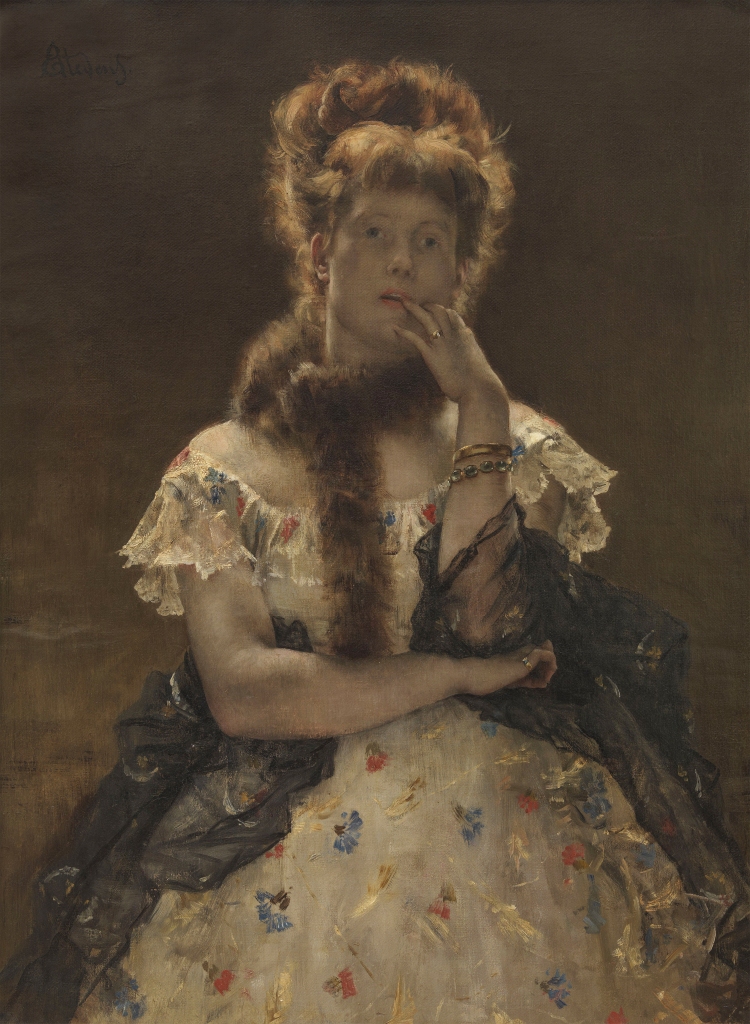
Beside being renowned for its realism and luminism, The Parisian Sphinx has been described as enigmatic, just as its title. Critics agree in that the apparently realistic painting conceals a hidden meaning. Many point to the “hidden dangers behind feminine tenderness,” and to the figure of the femme fatale.
In The Parisian Sphinx, Stevens turns a young bourgeoise into a mysterious and sensual apparition. A femme fatale. The contrast between tenderness and beauty and hidden danger in the girl, is paralleled by the dualistic nature of the painting, with its immediate, eye-pleasing realism against its hidden Symbolism. Stevens usually portrayed contemporary women purely as seductive subjects, although they had been traditionally given historical or mythological roles in painting. By contrast, according to Kathrin Hoffmann-Curtis, in this painting Stevens encoded his supposedly realistic portrait with the danger of the mythological figure. Stevens used hidden signs in a discerning way similar to Dante Gabriel Rossetti’s in Bocca Baciata. Since the mid-19th century, Pre-Raphaelite and Symbolist artists had been employing literary metaphors wherein femininity covertly represented love and death. Stevens on his part portrayed his Parisian Sphinx as cuddly, dreamy and mind-wandering.
His younger colleague James Ensor was not an admirer. He referred with florid contempt to the ‘currant juice’ and ‘pistachio’ colours of Stevens’ paintings. And towards the end of Stevens’ career, he called him a ‘frog, so full of hot air that he cannot help but burst’.
Source